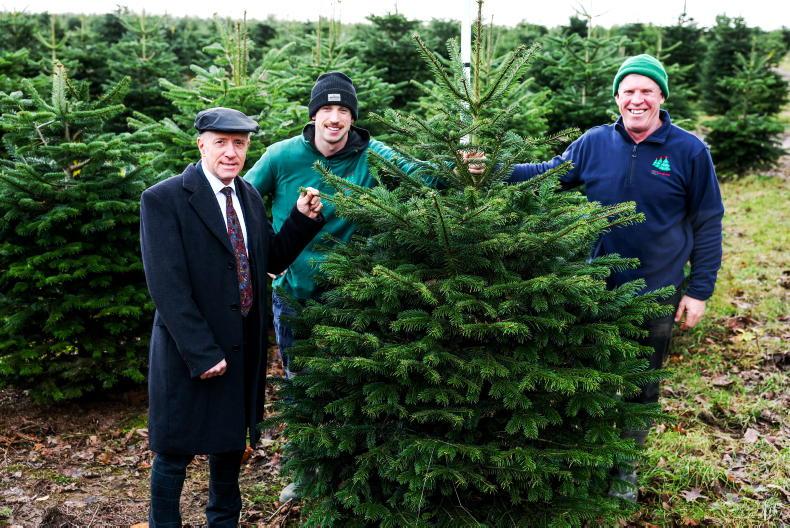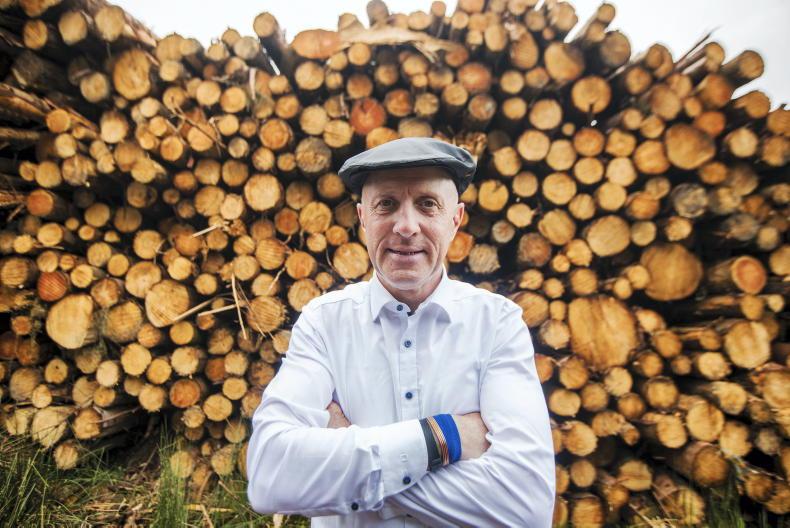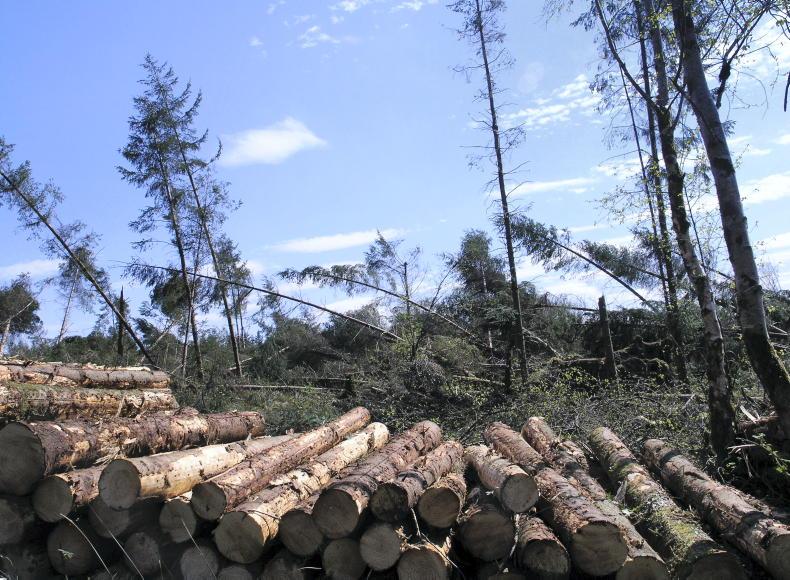A total of 26,050ha of forestry was flatted by storms Darragh and Éowyn, new data from the Department of Agriculture shows.
“Of this area, 14,500ha are in the Coillte estate and 11,550ha of private forest areas have suffered wind damage,” said Minister of State with responsibility for forestry Michael Healy-Rae. Damage to private forests is 5% lower than original estimates but the Coillte damage is 24% higher.
The detailed mapping assessment was carried out using imagery acquired from the Sentinel and SkySat satellite constellations. The use of high-resolution SkySat satellite imagery provided information at a local scale for delineation of forest damage areas.
Information at a stand level scale is now available to registered foresters through a storm damage map layer on the Department’s iNET mapping system.
The recent Teagasc Talking Timber seminar in Sligo highlighted opportunities and threats in maximising income from windblown forests. The event was opened by Minister Healy-Rae.
A number of positives emerged from the meeting, including the minister’s commitment to fund a windblow forest reconstitution scheme and forest certification for private growers. He emphasised that his officials would support rather than place barriers before landowners when planting, roading and harvesting.
“We will be encouraging people to build roads, certify their forest and get away from the dismal amount of trees planted annually,” he said.
While he acknowledged the storm had caused great loss, he reminded farmers they still had a valuable crop.
“My advice is not to rush into any decisions, but to make a step-by-step plan to minimise risk and maximise the value of their trees.
Value
“Most forests, despite being blown, can have considerable timber value, and will retain that value for some time, in particular if trees are still connected to the roots.”
John Ryan, forestry manager, Murray Timber Group, outlined the wide range of markets available to growers from high value large sawlog for construction to palletwood and stakewood “which are selling well at the moment”.
Blown trees have the same value at roadside as a normal clearfell, except there will be some reduction in income “due to increased harvesting costs, which are around 30% higher than a standing crop,” he said.
At the lower end of the value chain, small logs will find outlets in Ireland’s three wood-based panel mills as well as overseas markets.
Biomass
There is also a good market in the biomass energy sector, including Bord na Móna. During the open forum, a number of people in the audience outlined their frustrations about issues such as felling licences and timber measurement.
A major area of contention is the insistence by the Department on felling licences for windblow when there “is nothing in the Forestry Act 2014 that requires a licence to fell storm damaged timber,” maintained one member of the audience.
Forest owner Michael Sharkey, along with others, questioned the lack of transparency in timber measurement in Ireland.
“Why can’t a timber measurement scheme be introduced that is fair to both seller and buyer, similar to the system that currently exists between Coillte and sawmillers?” asked Sharkey.









SHARING OPTIONS